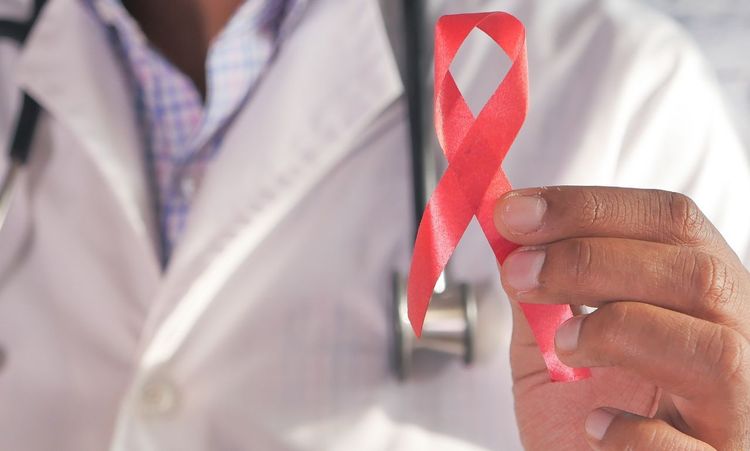Follicular lymphoma is a type of non-Hodgkin lymphoma characterized by slow growth, affecting the lymphatic system's B-cells. Despite being less aggressive than other lymphomas, its chronic nature can pose significant treatment challenges. Identifying its causes, recognizing symptoms early, and understanding treatment strategies significantly enhance patient outcomes and quality of life.
What Is Follicular Lymphoma?
Follicular lymphoma (FL) is one of the most common forms of indolent (slow-growing) non-Hodgkin lymphomas, originating from B lymphocytes, which are white blood cells vital for immune system function. Typically, FL affects lymph nodes but can also involve the spleen, bone marrow, or blood. Due to its slow progression, individuals can remain asymptomatic for extended periods, complicating timely diagnosis.
Key Characteristics of Follicular Lymphoma:
- Slow progression rate
- Often diagnosed at advanced stages (stage III or IV)
- More common in individuals aged 50 or older
- Slightly higher prevalence among females
Causes and Risk Factors of Follicular Lymphoma
The precise cause of follicular lymphoma remains unclear, but several risk factors and genetic predispositions have been identified.
Genetic Factors
Follicular lymphoma is strongly associated with a genetic mutation involving chromosomes 14 and 18, known as the t(14;18) translocation. This abnormality results in the overexpression of a gene called BCL2, causing the affected B-cells to survive longer than normal. Although this mutation is common in follicular lymphoma patients, not everyone with this translocation develops the condition, suggesting other factors play a role.
Environmental and Lifestyle Factors
While less clear-cut than genetic factors, certain environmental exposures and lifestyle choices are believed to increase lymphoma risk. These include:
- Exposure to pesticides or herbicides
- Long-term exposure to solvents or chemicals
- History of radiation therapy or chemotherapy treatments
- Chronic immune system suppression or autoimmune disorders
Age and Gender
Follicular lymphoma primarily affects older adults, usually diagnosed after the age of 50, with cases increasing with age. Although the condition can occur at younger ages, it is significantly rarer. It also occurs slightly more frequently among women, although reasons for this are not entirely understood.
Common Symptoms and Signs
The symptoms of follicular lymphoma often develop gradually, making them easy to overlook in the early stages. Commonly reported symptoms include:
- Swollen lymph nodes in the neck, armpit, or groin (often painless)
- Fatigue or unexplained tiredness
- Unexplained weight loss or loss of appetite
- Night sweats
- Fever without a clear cause
- Anemia (low red blood cell count)
- Increased susceptibility to infections
Because these symptoms overlap with other health conditions, accurate diagnosis typically requires thorough medical evaluation.
Diagnosing Follicular Lymphoma
Diagnosing follicular lymphoma involves multiple steps and tests to confirm disease presence and stage its progression accurately.
Diagnostic Procedures Include:
- Physical Examination: Checking for swollen lymph nodes and other signs of illness.
- Blood Tests: Assessing complete blood counts, liver, and kidney functions.
- Imaging Studies: CT scans, PET scans, or MRIs to locate affected lymph nodes and organs.
- Biopsy: Essential for definitive diagnosis, usually involving lymph node sampling to examine cells under a microscope.
- Bone Marrow Examination: Checking if lymphoma cells are present in the bone marrow to establish the disease's extent.
Staging and Prognosis
Follicular lymphoma staging categorizes the disease from stage I (early, localized) to stage IV (advanced, widespread involvement), guiding treatment decisions.
The Four Stages of Follicular Lymphoma:
- Stage I: Limited to one lymph node region.
- Stage II: Affecting two or more lymph node regions on one side of the diaphragm.
- Stage III: Lymph node involvement on both sides of the diaphragm.
- Stage IV: Spread beyond lymph nodes to organs such as bone marrow or liver.
Prognosis is generally favorable due to slow progression, with many patients living decades after diagnosis. Prognostic indices like the Follicular Lymphoma International Prognostic Index (FLIPI) evaluate patient outcomes based on age, stage, hemoglobin levels, and other clinical factors.
Treatment Approaches for Follicular Lymphoma
Treatment strategies for follicular lymphoma vary depending on disease stage, patient's overall health, symptoms severity, and treatment goals. Due to its slow progression, treatment may initially involve active surveillance, also known as “watchful waiting.”
Active Surveillance
Not all patients require immediate treatment. With active surveillance, doctors closely monitor the patient’s condition through regular appointments and testing, delaying treatment until necessary to avoid unnecessary side effects.
Radiation Therapy
Radiation therapy is often used when lymphoma is localized (stage I or II). Targeted radiation effectively controls localized lymphoma, achieving long-term remission in early-stage patients.
Chemotherapy
Chemotherapy remains a cornerstone treatment for advanced or symptomatic follicular lymphoma. Chemotherapy is typically given in cycles, allowing recovery periods between treatments to minimize side effects.
Immunotherapy and Targeted Therapy
Immunotherapy, particularly monoclonal antibodies, is frequently incorporated into treatment plans. These therapies specifically targets CD20 proteins on lymphoma cells, enabling the immune system to eliminate cancerous cells effectively.
Newer targeted therapies, known as R² therapy, are promising, offering improved response rates with fewer side effects.
Stem Cell Transplantation
Autologous (patient’s own cells) or allogeneic (donor cells) stem cell transplantation may be considered for younger, healthier patients experiencing relapse after initial treatment, offering potentially curative outcomes.
Clinical Trials and Future Therapies
Participation in clinical trials offers access to emerging treatments, including CAR T-cell therapy and novel drug combinations, potentially improving survival and quality of life.
Living with Follicular Lymphoma: Coping and Support
Managing follicular lymphoma goes beyond medical treatment. Emotional support, coping strategies, lifestyle changes, and connecting with support groups significantly enhance patients’ quality of life.
- Emotional and Psychological Support: Counseling, therapy, or support groups can ease anxiety, depression, and emotional stress associated with lymphoma.
- Healthy Lifestyle Choices: Regular physical activity, balanced nutrition, and adequate rest enhance overall health, reducing treatment-related side effects.
- Routine Follow-up: Regular medical check-ups ensure timely detection of disease progression or relapse, enabling prompt treatment adjustments.
Conclusion: Hope and Progress in Follicular Lymphoma Care
While follicular lymphoma poses ongoing challenges due to its chronic nature, advances in diagnostics, personalized treatment, and supportive care continue to improve patient outcomes significantly. Early detection, comprehensive care strategies, and continual medical research offer patients hope for prolonged survival, improved quality of life, and potentially even a cure.




